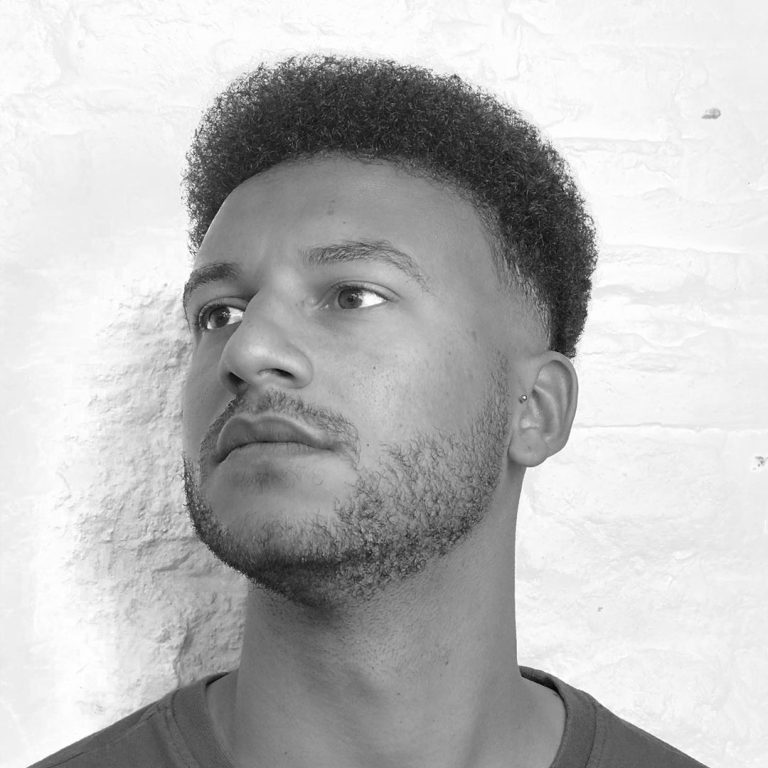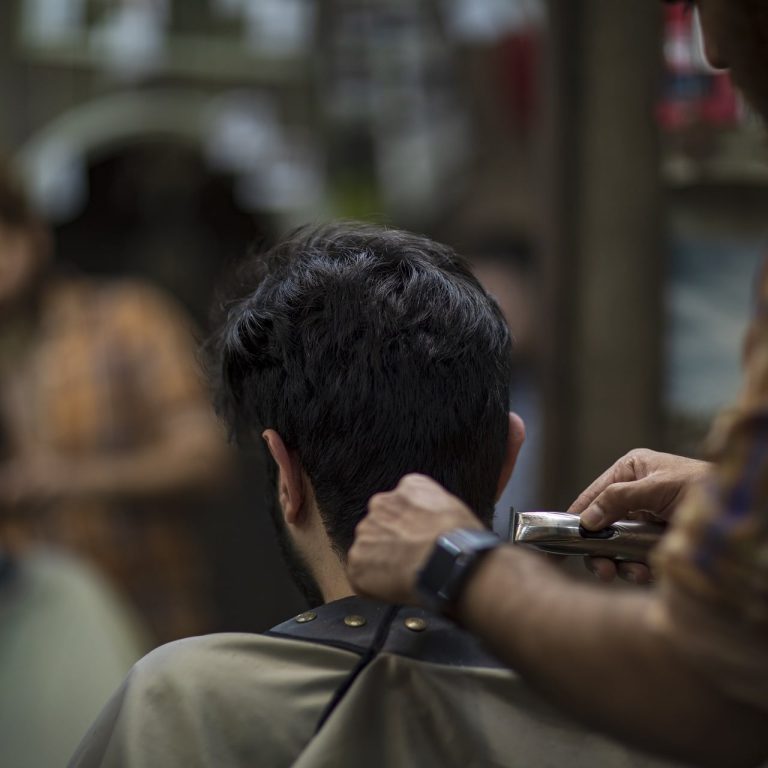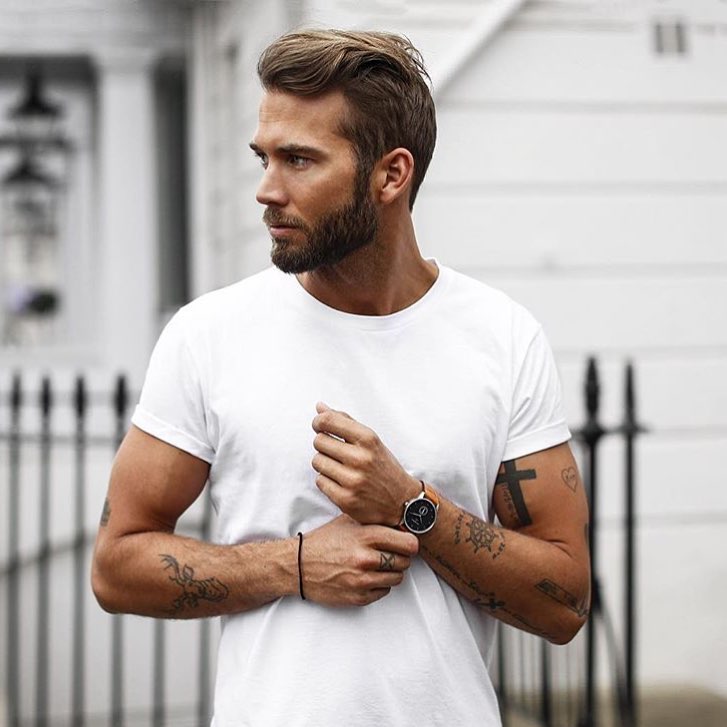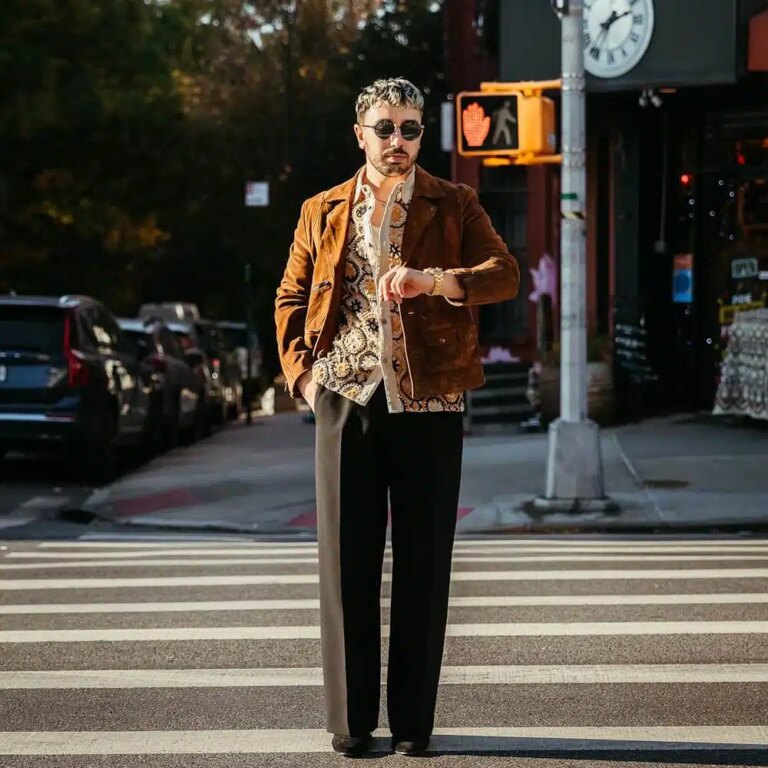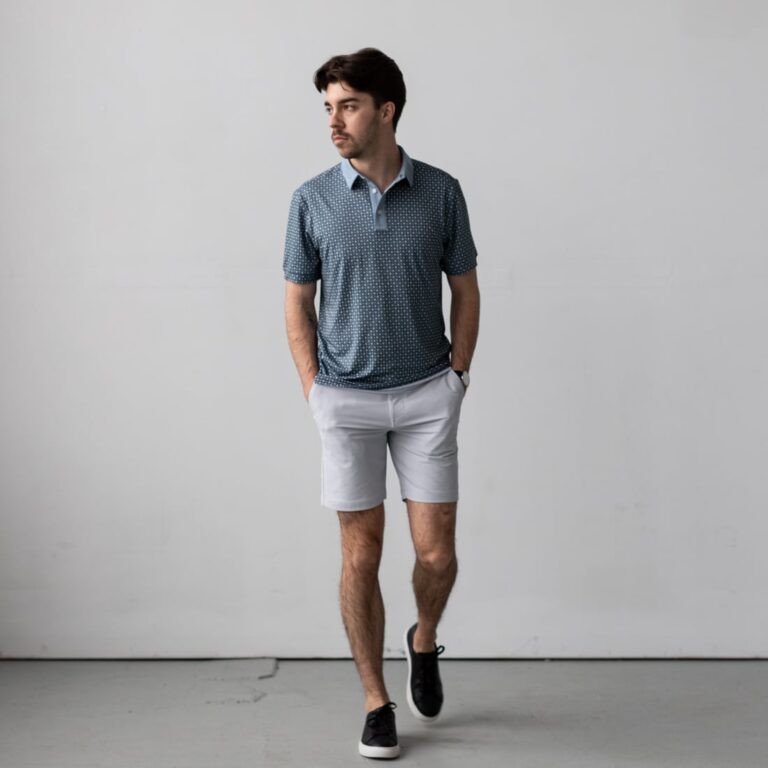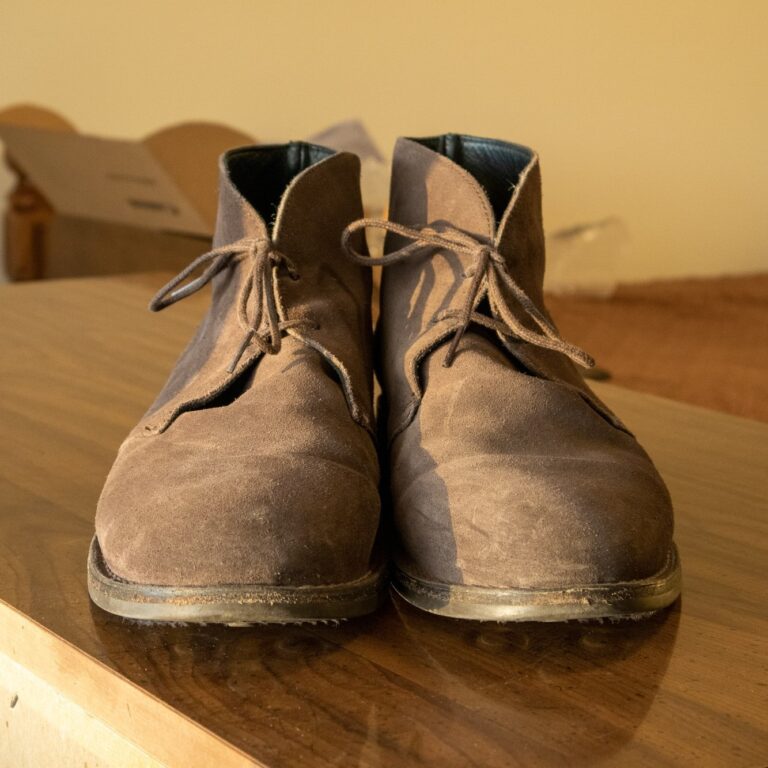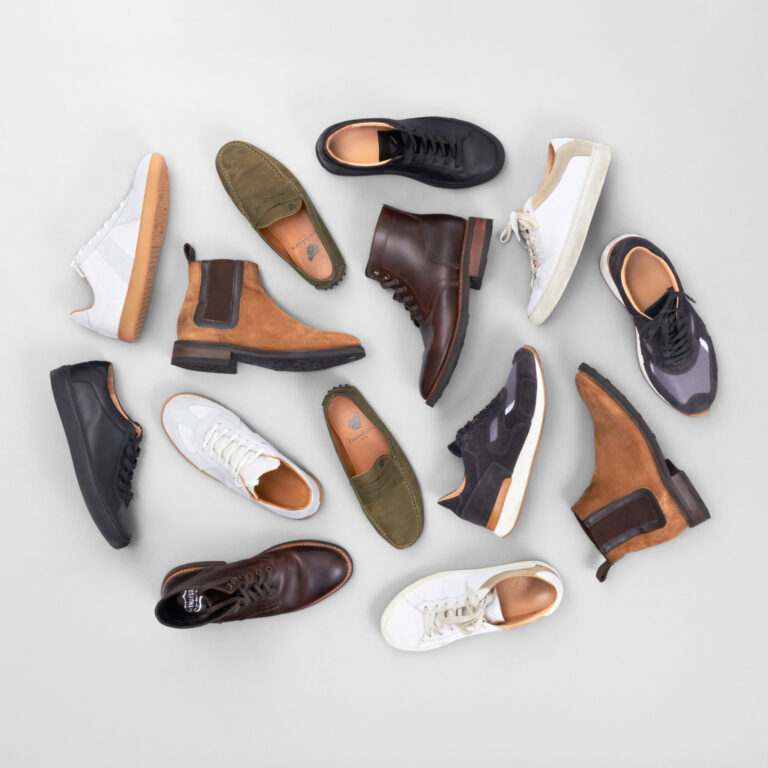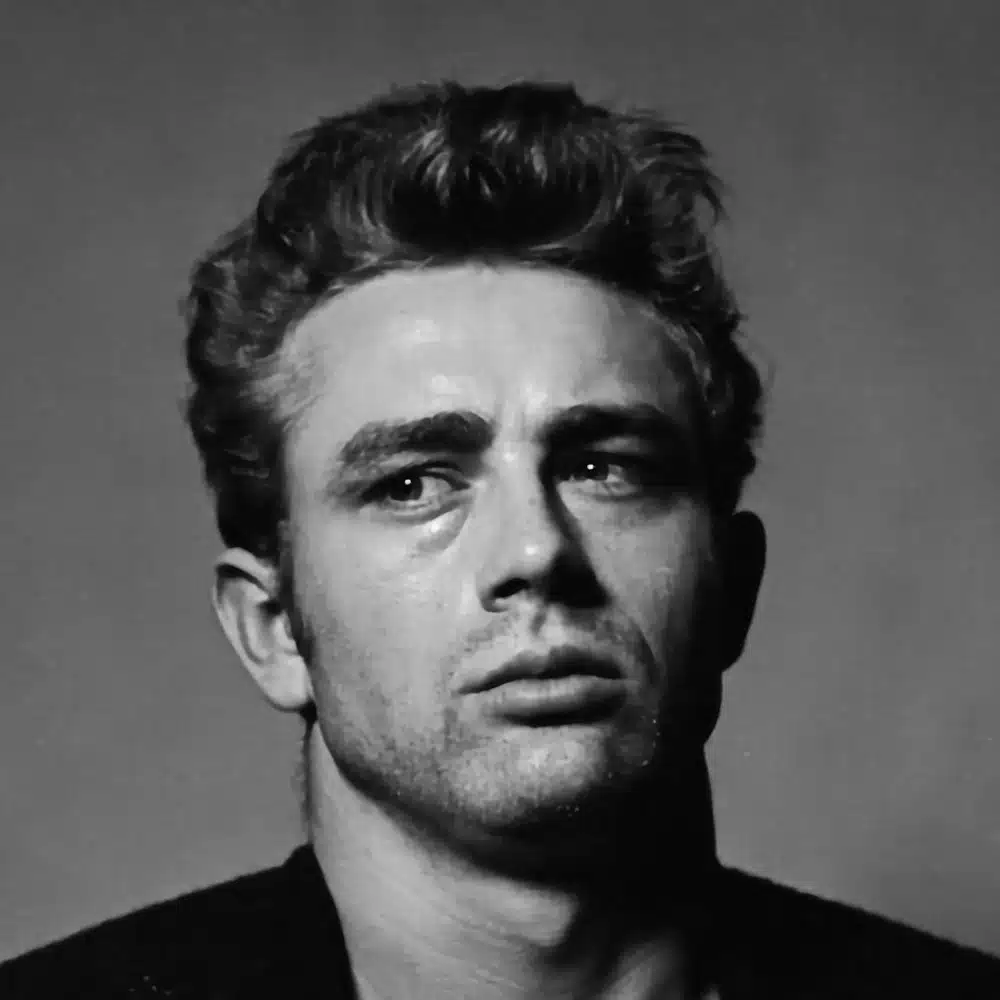
Interested in vintage ‘50s hairstyles? You’ve come to the right place!

The 1950s served up a lot of pop culture’s most important style icons. From James Dean to Marlon Brando to Sidney Poitier, we cover a lot of them in our edit of male fashion icons. More than just clothes, though, a big part of the legacy of this era lies in the hair.
While the ‘20s set the stage for the coiffe, the ‘50s modernized it. Think about it. We very much still wear a lot of the same hair compositions from that era today. Of course, certain approaches are given a modern twist, while others are reserved for purposely retro styles.
Still, when it comes to ‘vintage 50s hairstyles for men, they’re still relevant, and if not, they’re still considered truly iconic hairstyles.
It’s a fun era for men’s hair and can really help us learn a lot about the way we do hair today.
50s Vintage Hairstyles for Men
So basically, in the ‘50s, everyone did their hair. Grown men and more conservative gents wore their hair short, while the more rebellious youth kept their hair longer.
However, men generally didn’t wear their hair hippie long as some did in the ‘60s. Everyone used hair products and kept a comb on their person.
Vintage 50s Hairstyle for Short Hair
Shorter styles were considered more clean-cut. They were worn by traditionalists and professionals and were the preferred style of school authorities for young men.
Younger Hollywood stars and rockers opted for longer styles. However, established, mature, and traditionally dapper stars like Cary Grant would often be sporting a regular cut or a slick back.
Some of these styles included:
The Side-Part Regular Cut
This is basically a standard hairstyle for men even today. The sides and back are “tucked in” or tapered, while the top is combed to the back or side.
It’s sort of the style a man ends up combing his hair naturally without even thinking about it. The top can be a little looser or a little tighter, depending on how much product you put in. But, everything is meant to stay in place, or at least go back into place even after it’s moved.
The Slick Back and the Executive Contour
Think Don Draper. The slicked-back look is still a go-to professional style today, though we don’t always go as shiny. It’s a sleeker, tighter version of the regular cut where absolutely no movement is expected.
The executive contour is a version of the slick back but a little less helmet-like in that there’s a bit of topography. There’s a side part that creates a bit of a divot for a more sculptural look.
Upon first glance, you might think these hairs could move or blow in the wind, but it’s as tight and crisp as any slick back.
The Crew Cut
The crew cut was another preferred style by authorities because it represented discipline and respect. After all, it’s the cut given to military draftees. Men went for this cut to look mainstream, establishment, or traditionally masculine.
The Ivy League
The Ivy League also referred to as the Harvard clip or the Princeton, is a lot like a crew cut. However, the top is long enough to part on the side.
It wasn’t, however, long enough that the bangs needed drastic pulling back.
The College Contour
The college contour involves a closer cut on the sides, with longer hair on top that was then slicked back in the style of the executive contour. It’s a bit like today’s undercut.
Back then, it was essentially a combination of the Ivy and the executive and a middle-ground between what a young college chap would wear and what a grown executive professional would wear. Perhaps it should’ve been called the grad student?
Vintage 50s Hairstyles for Long Hair
When you think of 1950s hair, you probably think of greaser hairstyles and Elvis’s pompadour. These “long hair” styles would be considered medium-length by contemporary standards since guys these days wear their hair in a variety of lengths.
Here’s what the rebellious youth was sporting.
Long Pompadour
The pompadour is probably the most iconic look of the ‘50s. This is because it was definitely a popular hairstyle at the time, with variations worn by James Dean, the Everly Brothers, and, of course, Elvis Presley.
It’s actually named after Madame de Pompadour, who was King Louis XV’s mistress. In the 1700s, aristocratic ladies in France wore their hair big and tall, swept up and over.
It’s this very volume that defines a ‘50s pompadour. Arguably, a lot of the other rebellious long hairstyles of the ‘50s use the pompadour as their base.
The Detroit
The Detroit may have been a precursor to the mullet as it involved long sides and a short, flat top. The difference here is that the sides were combed back, creating a middle part in the back of the head called a ducktail. This middle part was also referred to in less polite terms as the “DA” (Google it).
This and the Breaker came to represent rebellion and disaffected youth.
The Breaker
This is the California equivalent of the Detroit, with the top grown out and combed into a wave. Again, since so many school dress codes required young boys to keep their hair trim and short, this was definitely the style of the “bad boys.”
If that wave flopped out like bangs, this variation would also be referred to as, appropriately enough, “the flop.”
Jelly Roll
The jelly roll is a style that involves combing your hair up from the sides, then from each side (as in from the left and the right), you’ll bring that hair inward. Each side will then curl in, creating a valley in the middle of the top of your head.
I honestly don’t know how one would accomplish this without hair curlers and tons of hair spray. You can also wear it so that the sides meet in the middle of your forehead and cascade down into an “elephant trunk” of curly hair hanging in front of your forehead.
This variation is, in fact, called the elephant trunk.
Another name for this style is the Teddy boy. In the ‘50s, delinquents and gang members in Britain often wore the jelly roll hairstyle. Edwardian fashion was also popular among them, earning the subculture and their hairstyle the nickname “Teddy Boys.”
Conclusion: How 1950s Hairstyles Shaped Hair Today
I’d say that every mid-length and short hairstyle today is probably descended from styles men and boys were wearing in the ‘50s.
Looser variations of the executive contour are still a go-to professional look for office workers. Meanwhile, the college contour is really just an undercut.
The whole concept of longer tops and shorter sides, I believe, is a way to balance personal expressive style with clean lines.
What are some of your favorite vintage hairstyles? Do you wear your hair in a way that’s inspired by it? Let us know!
